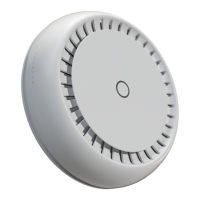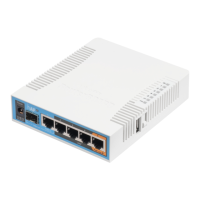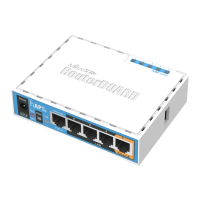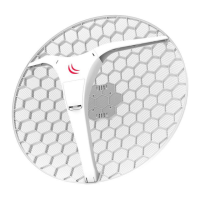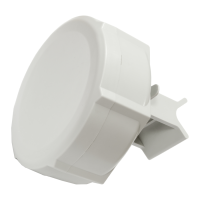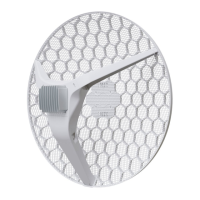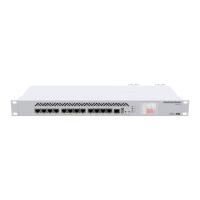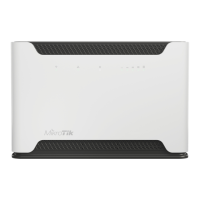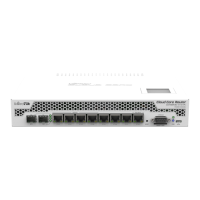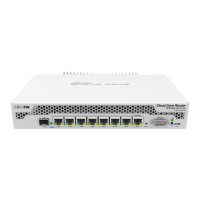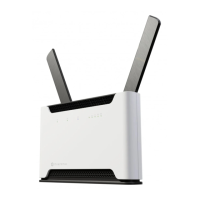1.
2.
3.
Connect the Ethernet cable from the device to the POE port of the POE adapter.
Connect an Ethernet cable from your LAN to the LAN port of the POE adapter, please mind arrows for data and power flow.
Connect the power cord to the adapter, and then plug the power cord into a power outlet.
Mounting
It is possible to attach the device to a wall or ceiling, using the provided mounting bracket on the back of the unit:
Configuration
By default, the device is configured as a wireless access point, with the first ethernet port (Eth1) configured as a DHCP client, and the second interface
bridged together with the wireless interface. A DHCP server is configured on the bridge interface.
Once logged in, we recommend clicking the "Check for updates" button in the QuickSet menu, as updating your RouterOS software to the latest version
ensures the best performance and stability. For wireless models, please make sure you have selected the country where the device will be used, to
conform with local regulations.
RouterOS includes many configuration options in addition to what is described in this document. We suggest starting here to get yourself accustomed to
the possibilities: . In case an IP connection is not available, the Winbox tool ( ) can be used to connect to the MAC https://mt.lv/help https://mt.lv/winbox
address of the device from the LAN side (all access is blocked from the Internet port by default).
For recovery purposes, it is possible to boot the device from the network, see a section .cAP ac#Reset button
Expansion slots and ports
Product code RBcAPGi-5acD2nD-XL
CPU Quad-core IPQ-4018 710 MHz
Size of RAM 128 MB
RAM type DDR3L
Storage 16 MB, Flash
Number of 1G Ethernet ports 2
Wireless 2.4 GHz 5 GHz
Supported protocol 802.11b/g/n 802.11a/n/ac
Antenna gain 6 dBi 5,5 dBi
The mounting and configuration of this device should be done by a qualified person.
Warning! This equipment should be installed and operated with a minimum distance of 20 cm between the device and your body. The operation
of this equipment in the residential environment could cause radio interference.
Operating humidity can be from 5% to 95% non-condensing.
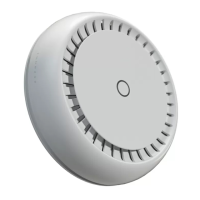
